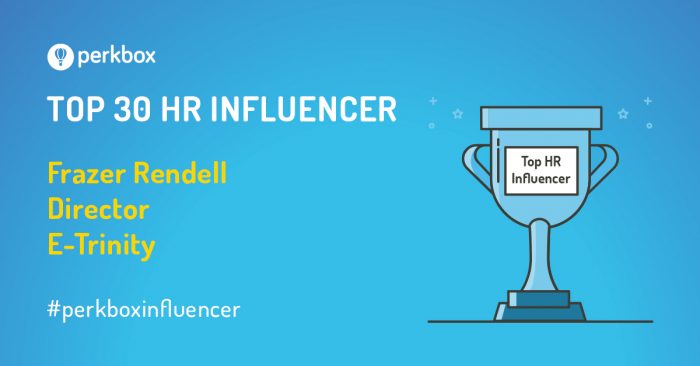
I often hear conversations or read articles where people are talking about how important it is to make employees happy at work and how this is the same as driving levels of engagement. However, this is not the case. Some of the interventions that are designed to specifically make people happy, are very different to driving engagement.
It is probably worth starting by clarifying what I am referring to when talking about employee engagement. Often employee engagement is referred to as a verb. As something you go and do such as marketing or accounting. But this is not the case. Engagement is an outcome from creating a culture and building relationships between managers and their team, where everyone is intrinsically motivated to deliver the purpose and values of the organisation. Where this is done well, it is not left to HR, it is owned by the board and delivered throughout the organisation. This involves building Trust and respect through leadership, empowerment and recognition. When you get this right, it works at a neurological level in the limbic part of the brain, the part that drives all our actions and behaviours. There will be an increase in the dopamine levels as employees feel they have achieved or contributed something, which helps them feel energized and invigorated. The outcome is longer-term and creates high performing teams that will do amazing things.
Whereas happiness is a state of mind or emotion. It can be impacted in an instance by a change in circumstance or environment either within or outside of work. Happiness also has a neurological impact through the creation of chemicals such as serotonin which is often produced when you feel valued, which is why it is often created in social situations. With this type of serotonin happiness if feels like there is no effort to feel joyful, but without engagement, this joy could be wasted.

In the work environment, it is possible to have teams that are happy, but have low engagement, typically measured by low productivity. This could be in teams where they enjoy the community feel of the team, subsidised meals, discount vouchers or other benefits, but they are not aligned to delivering the organisations purpose, values or objectives.
Some examples of the interventions that create the difference between happiness and engagement are below:
| Elements that create happiness | Elements that create engagement |
|---|---|
| Pay rates | Empowerment |
| Bonus | Involvement |
| Benefits Package | Recognition |
| Social activities | Respect |
In these examples, to create happiness generally has a financial implication. Once this route is embarked upon, to continually achieve the same level of happiness employees will require ongoing and often increased incentives. Whereas creating engagement does not have to cost anything, as it is generally all about relationships. In many of the successful examples we have worked with, there has been no increase in the salary package and benefits that the employees receive, but the organisations have performed more successfully.
By creating the right culture and relationship between line managers and their teams, employees are happier at work whilst helping the business achieve its targets. Once employees are engaged, they are happier at an intrinsic level and do not need external stimulus or financial incentives in the same way. This also has positive impacts from a health and well-being perspective for employees. A genuine win-win all round.
Is it possible to measure both happiness and engagement separately? A happiness measure is likely to include smiley faces of varying degree of smile or frown, where we see new survey tools going live almost every week. Engagement can also be measured using surveys, but the most significant measure will be in the organisations metrics which will show improved customers satisfaction, sales, operation costs and employee turnover to name but a few.
Can you afford to just spend money making people happy, or do you need to instead spend the time making them engaged?
To find out more about the tools that help managers create this level of engagement contact us here.
About Frazer Rendell and e-trinity
Frazer has spent 9 years delivering consultancy and training on employee engagement. The success that Frazer has had in delivering this within the UK has also been replicated in Ireland, Taiwan and Spain. Prior to this, Frazer spent nearly 25 years gaining senior operational experience in Hospitality, Retail and Healthcare Industries.
Frazer now runs ‘e-trinity consultancy’ which delivers practical and measurable tools to improve employee engagement throughout organisations.
Frazer is also the Founding Partner of ‘Yellowblue Partners’ which brings together 7 businesses who are all passionate about putting employees at the heart of an organisations success and achieving both the employee’s and the organisation’s full potential.
Frazer has written articles on employee engagement in People Management, The Telegraph and Thomson Reuters amongst others. He also speaks regularly at events, including the CIPD Conference on Employee Engagement and the Applied Research Conference. Frazer was also nominated as one of the top 30 HR Influencers. In addition, Frazer is heavily involved with ‘Engage for Success’ in the UK, where he chairs a subgroup researching ‘The Impact of Performance Management on Employee Engagement’ supported by Cranfield Business School.




Comments are closed here.